#AgileFramework
Explore tagged Tumblr posts
Text
Project management is an essential discipline that enables organizations to effectively plan, execute, and complete projects on time and within budget. A well-defined project management framework ensures that teams follow structured methodologies, tools, and processes to achieve project goals.
In this blog, we will explore different project management frameworks, including the Agile project management framework, project governance framework, and project management methodologies and frameworks used across industries.
#ProjectManagement#AgileFramework#PMO#Governance#ProjectManagementFramework#Scrum#Kanban#Waterfall#PMBOK#AgileProjectManagement#PRINCE2#HybridProjectManagement#RiskManagement#ProjectSuccess#MochaFramework
0 notes
Text

ICYMI: Strategic Implementation Frameworks: Essential Components for Effective Execution and Sustainable Growth https://kamyarshah.com/strategic-implementation-frameworks-essential-components-for-effective-execution-and-sustainable-growth/
0 notes
Text
The Agile Software Development Lifecycle: An In-Depth Guide

Agile software development methodology has become essential for modern software development due to its flexibility and responsiveness. It emphasizes continuous testing, customer feedback, and rapid releases, making it ideal for evolving project requirements. The Agile Manifesto's core values prioritize human interaction, working software, customer collaboration, and adaptability over rigid processes, documentation, and strict planning. Popular frameworks include Scrum, Kanban, Extreme Programming (XP), and SAFe.
The Agile lifecycle involves five phases: Concept and Planning, Inception, Iteration, Release, and Maintenance. Each phase focuses on specific tasks, from defining project scope and designing architecture to development, deployment, and ongoing maintenance. Eventually, the product enters the Retirement phase, where it’s phased out for newer solutions.
Stigasoft, a trusted software development company, excels in Agile methodologies, offering certified expertise and a commitment to high-quality standards. Partner with Stigasoft for solutions that drive business growth—schedule a call today!
If you want to get complete information related to this topic click HERE.
#agilemethodology#software development#AgileFramework#software engineering#techinnovation#SoftwareTesting#AgilePractices#businessexcellence#techsolutions#Stigasoft
0 notes
Text
Benefits of Agile Transformation: Why Your Business Needs It
Agile Transformation has become increasingly essential for businesses striving to thrive in today's dynamic and competitive market. In an era of rapid technological advancements and shifting consumer preferences, organizations need to be agile and adaptive to stay ahead of the curve. Agile Transformation offers a strategic approach to achieving this agility, allowing businesses to embrace change, innovate, and deliver value to their customers more effectively.
Improved Flexibility and Adaptability
One of the primary benefits of Agile Transformation is improved flexibility and adaptability. Traditional business models often struggle to keep pace with the fast-evolving market dynamics, leading to missed opportunities and stagnation. Agile methodologies, on the other hand, emphasize iterative development and continuous feedback, enabling businesses to respond quickly to changes in the market. By breaking down complex projects into smaller, more manageable increments, Agile Transformation empowers teams to adapt their plans and priorities in real-time, ensuring that they stay aligned with business objectives.
Enhanced Collaboration and Communication
Agile Transformation also fosters enhanced collaboration and communication within organizations. Traditional hierarchical structures can hinder communication and collaboration, leading to silos and inefficiencies. Agile methodologies promote cross-functional teams and open communication channels, facilitating collaboration among team members from different departments and disciplines. By encouraging transparency and teamwork, Agile Transformation enables organizations to leverage the collective expertise of their workforce and drive innovation.
Increased Efficiency and Productivity
Another significant benefit of Agile Transformation is increased efficiency and productivity. Agile methodologies focus on delivering value to customers through iterative development and continuous improvement. By prioritizing the most valuable features and delivering them incrementally, Agile Transformation minimizes waste and maximizes the return on investment. Moreover, Agile practices such as daily stand-up meetings and sprint reviews help teams stay focused and motivated, leading to higher productivity levels and faster time-to-market.
Better Customer Satisfaction
Agile Transformation places a strong emphasis on customer satisfaction and value delivery. By involving customers early and often in the development process, Agile methodologies ensure that products and services meet their needs and expectations. Continuous feedback loops enable businesses to gather valuable insights from customers and make necessary adjustments to their offerings quickly. As a result, Agile Transformation not only enhances customer satisfaction but also builds trust and loyalty, driving long-term business success.
Competitive Advantage
In the current highly competitive business environment, securing a competitive edge is vital for survival. Agile Transformation enables businesses to stay ahead of the competition by fostering innovation and adaptability. By embracing change and embracing a culture of continuous improvement, Agile organizations can innovate faster, respond to market trends more effectively, and seize new opportunities ahead of their competitors. In a world where disruption is the norm, Agile Transformation is a strategic imperative for businesses looking to maintain their relevance and leadership position.
Cost Reduction and Risk Management
Finally, Agile Transformation helps businesses reduce costs and manage risks more effectively. Traditional project management approaches often suffer from budget overruns and missed deadlines due to scope creep and unforeseen obstacles. Agile methodologies mitigate these risks by breaking down projects into smaller, manageable iterations and delivering value incrementally. This iterative approach allows businesses to identify and address risks early in the development process, minimizing the impact on project timelines and budgets. Additionally, Agile Transformation promotes a culture of experimentation and learning, enabling businesses to innovate with confidence and minimize the fear of failure.
Conclusion In conclusion, Agile Transformation offers an uncountable number of benefits for businesses seeking to thrive in today's fast-paced and competitive environment. From improved flexibility and adaptability to enhanced collaboration and communication, Agile methodologies empower organizations to innovate, deliver value to customers, and gain a competitive edge. By embracing Agile Transformation, businesses can increase efficiency, reduce costs, and manage risks more effectively, ultimately driving long-term growth and success.
#transformation#agile#agilemethodologies#agilepractices#agileframework#scrum#kanban#lean#agileadoption#agileinformation#agileculture#agilemindset#agileprinciples#agileteams#agileleadership
0 notes
Text
Agile Methodology Sprint Planning: A Detail Structure and Planning
Agile methodology has revolutionized the way software development projects are executed, emphasizing flexibility, collaboration, and responsiveness to change. At the heart of Agile lies Sprint Planning, a crucial phase where teams lay the groundwork for the upcoming sprint cycle. Let's go to the detailed application of Agile Methodology Sprint Planning and uncover its significance in delivering successful projects.
Introduction to Agile Methodology
Agile methodology is an iterative approach to software development that prioritizes customer satisfaction, adaptive planning, and continuous improvement. Unlike traditional waterfall methods, Agile encourages incremental development, allowing teams to respond to feedback and adapt to changing requirements throughout the project lifecycle.
Understanding Sprint Planning
Definition of Sprint Planning
Sprint Planning is a collaborative event in Agile methodology where the Scrum team plans the work to be done during the upcoming sprint. It involves determining which items from the product backlog will be included in the sprint, defining the sprint goal, and estimating the effort required to complete the selected work.
Importance of Sprint Planning in Agile Methodology
Sprint Planning sets the tone for the entire sprint cycle, providing clarity and direction to the team. By establishing a clear sprint goal and selecting the most valuable items from the backlog, This technology ensures that the team remains focused on delivering tangible results within a fixed timeframe.
Key Components of Sprint Planning
Sprint Goal
The Sprint Goal defines the objective or outcome that the team aims to achieve by the end of the sprint. It serves as a guiding principle for the team, helping them prioritize tasks and make decisions that align with the overall project vision.
Backlog Refinement
Before Sprint Planning begins, the Product Owner ensures that the product backlog is refined and prioritized. This involves breaking down user stories into smaller, actionable tasks, estimating their effort, and clarifying any ambiguities or dependencies.
Sprint Backlog
The Sprint Backlog is a subset of the product backlog that contains the list of tasks committed to by the team for the upcoming sprint. It includes user stories, bugs, and technical debt items that the team agrees to complete within the sprint timeframe.
Sprint Planning Meeting
The Sprint Planning Meeting is a time-boxed event where the entire Scrum team collaborates to plan the work for the upcoming sprint. During the meeting, the team reviews the product backlog, selects items for the sprint backlog, and estimates the effort required for each task.
Roles and Responsibilities
Product Owner
The Product Owner is responsible for prioritizing the product backlog, clarifying requirements, and ensuring that the team delivers value to the customer. During Sprint Planning, the Product Owner provides guidance on the sprint goal and helps the team understand the business objectives.
Scrum Master
The Scrum Master assists the Sprint Planning meeting, keeping it focused and productive. They help the team adhere to Scrum principles and remove any impediments that may hinder progress during the sprint.
Development Team
The Development Team consists of cross-functional members who are responsible for delivering the work committed to in the sprint backlog. During Sprint Planning, they collaborate to estimate the effort required for each task and determine how they will accomplish the sprint goal.
Step-by-Step Guide to Sprint Planning
Setting the Sprint Goal
The Product Owner articulates the sprint goal based on the highest priority items in the product backlog. The sprint goal should be specific, achievable, and aligned with the overall project objectives.
Backlog Refinement
The Product Owner and Development Team collaborate to refine the product backlog, breaking down user stories into smaller tasks and estimating their effort. This ensures that the backlog items are well-defined and ready for inclusion in the sprint.
Estimating Effort
The Development Team estimates the effort required to complete each task in the sprint backlog. This can be done using techniques such as story points, timeboxing, or planning poker, depending on the team's preference.
Committing to Sprint Backlog
Based on the sprint goal and the team's capacity, the Development Team commits to a set of tasks to be completed within the sprint timeframe. The sprint backlog is finalized, and the team is ready to begin work on the selected items.
Best Practices for Effective Sprint Planning
Prioritize User Stories
Focus on delivering value to the customer by prioritizing user stories that address their most pressing needs. This ensures that the team is working on the most important tasks first, maximizing the impact of each sprint.
Keep the Sprint Goal Clear and Achievable
Ensure that the sprint goal is well-defined and achievable within the sprint timeframe. Avoid overcommitting or setting unrealistic expectations that may lead to frustration and burnout.
Involve the Entire Team
Sprint planning is a group endeavor that includes the whole Scrum team. Encourage open communication and active participation from all team members to ensure that everyone has a clear understanding of the sprint goal and their role in achieving it.
Review and Adapt
Regularly review the progress of the sprint and adapt as needed to stay on track. Keep communication channels open and be prepared to adjust priorities or reallocate resources if unexpected challenges arise.
Challenges in Sprint Planning
Lack of Clarity in Requirements
Unclear or ambiguous requirements can lead to confusion and delays during Sprint Planning. It's important to clarify any ambiguities upfront and involve stakeholders in the refinement process to ensure that everyone is on the same page.
Time Constraints
Sprint Planning meetings are time-boxed to ensure that they stay focused and productive. However, tight deadlines can sometimes limit the team's ability to thoroughly discuss and plan the work, leading to rushed decisions or overlooked details.
Overcommitment
Teams may sometimes overcommit to a sprint, taking on more work than they can realistically complete within the timeframe. This can result in anxiety, exhaustion, and a lower quality of work.It's essential to set realistic goals and prioritize tasks based on their value and complexity.
Benefits of Agile Methodology Sprint Planning
Improved Visibility and Transparency
Sprint Planning provides stakeholders with a clear understanding of what will be delivered in each sprint and when it will be completed. This transparency fosters trust and collaboration between the team and stakeholders, leading to more successful outcomes.
Enhanced Collaboration and Communication
Sprint Planning encourages open communication and collaboration among team members, fostering a culture of shared responsibility and accountability. By involving stakeholders in the planning process, teams can ensure that everyone is aligned and working towards the same goals.
Faster Time-to-Market
By breaking down work into small, manageable chunks and delivering value incrementally, Agile Methodology Sprint Planning enables teams to bring products to market faster. This iterative approach allows for rapid feedback and course correction, reducing the time it takes to deliver value to customers.
Conclusion
Agile Methodology Sprint Planning is a foundational practice that sets the stage for successful software development projects. By establishing clear goals, prioritizing tasks, and fostering collaboration, Sprint Planning enables teams to deliver high-quality products that meet customer needs and drive business value. By embracing Agile principles and incorporating Sprint Planning into their workflow, organizations can adapt to change more effectively, respond to customer feedback more rapidly, and ultimately, achieve greater success in today's fast-paced digital landscape.
#AgileMethodology#AgileFramework#ScrumMaster#ProjectPlanning#ProductivityTips#TeamManagement#LeadershipSkills#DigitalTransformation#BusinessStrategy#WorkflowOptimization
0 notes
Text
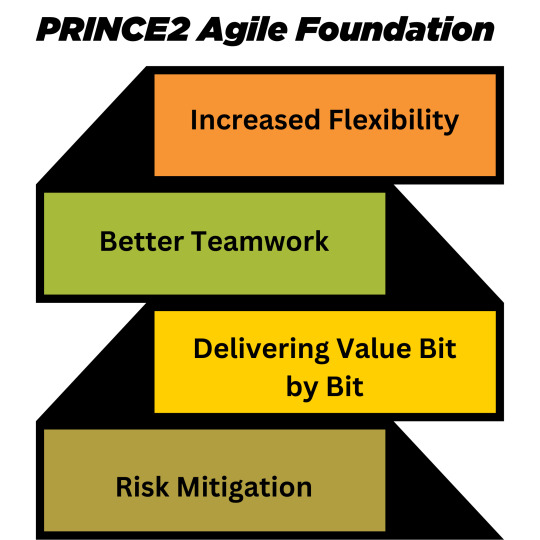
"Get the PRINCE2 Agile Foundation certification to unleash the potential of flawless project management. This exciting training program equips professionals with the skills necessary to traverse complicated projects in the fast-paced business world of today by fusing agile approaches with the reliable PRINCE2 framework.
https://www.tumblr.com/prince2agileprojectmanagement/740284207110160384/unleashing-prince2-agile-foundation-project?source=share
0 notes
Text
Navigating Success with Certified ScrumMaster (CSM) Certification
Introduction:
The Certified ScrumMaster (CSM) certification stands out as a beacon guiding professionals toward effective and collaborative project delivery in the world of agile project management. Agile methodologies, particularly Scrum, have transformed the way teams tackle complex projects. This blog post examines the importance of CSM certification, focusing on its key components, benefits, and the transformative impact it can have on individuals and organizations.
Understanding CSM Certification:
The Scrum Alliance's Certified ScrumMaster (CSM) certification is intended for individuals who want to lead and facilitate Scrum teams. Scrum is a framework for agile development that encourages iterative development, collaboration, and continuous improvement.
Key Components of CSM Certification:
Scrum Fundamentals: A solid foundation in Scrum fundamentals is required for CSM certification. Candidates gain an understanding of the Scrum framework, including its roles (ScrumMaster, Product Owner, and Development Team), events (Sprint, Daily Scrum, Sprint Review, and Sprint Retrospective), and artifacts (Product Backlog, Sprint Backlog, and Increment).
Scrum Roles and Responsibilities: CSM certification delves into a ScrumMaster's specific roles and responsibilities. This includes organizing Scrum events, removing roadblocks, and ensuring that the Scrum team follows Scrum practices. The ScrumMaster plays an important role in fostering a collaborative and self-organizing team culture.
Scrum Events and Artifacts: Candidates learn about Scrum events like Sprint Planning, Daily Scrum, Sprint Review, and Sprint Retrospective. They also learn about important Scrum artifacts such as the Product Backlog, Sprint Backlog, and Increment and how they contribute to successful project delivery.
Servant Leadership: The concept of servant leadership is heavily emphasized in CSM certification. ScrumMasters are encouraged to serve the team by facilitating collaboration, removing impediments, and creating an environment in which the team can achieve its full potential.
Agile Values and Mindset: CSM certification instills an agile mindset and values in addition to Scrum mechanics. Candidates learn to embrace change, prioritize customer satisfaction, and iteratively deliver value. This mindset is critical to Scrum teams' success.
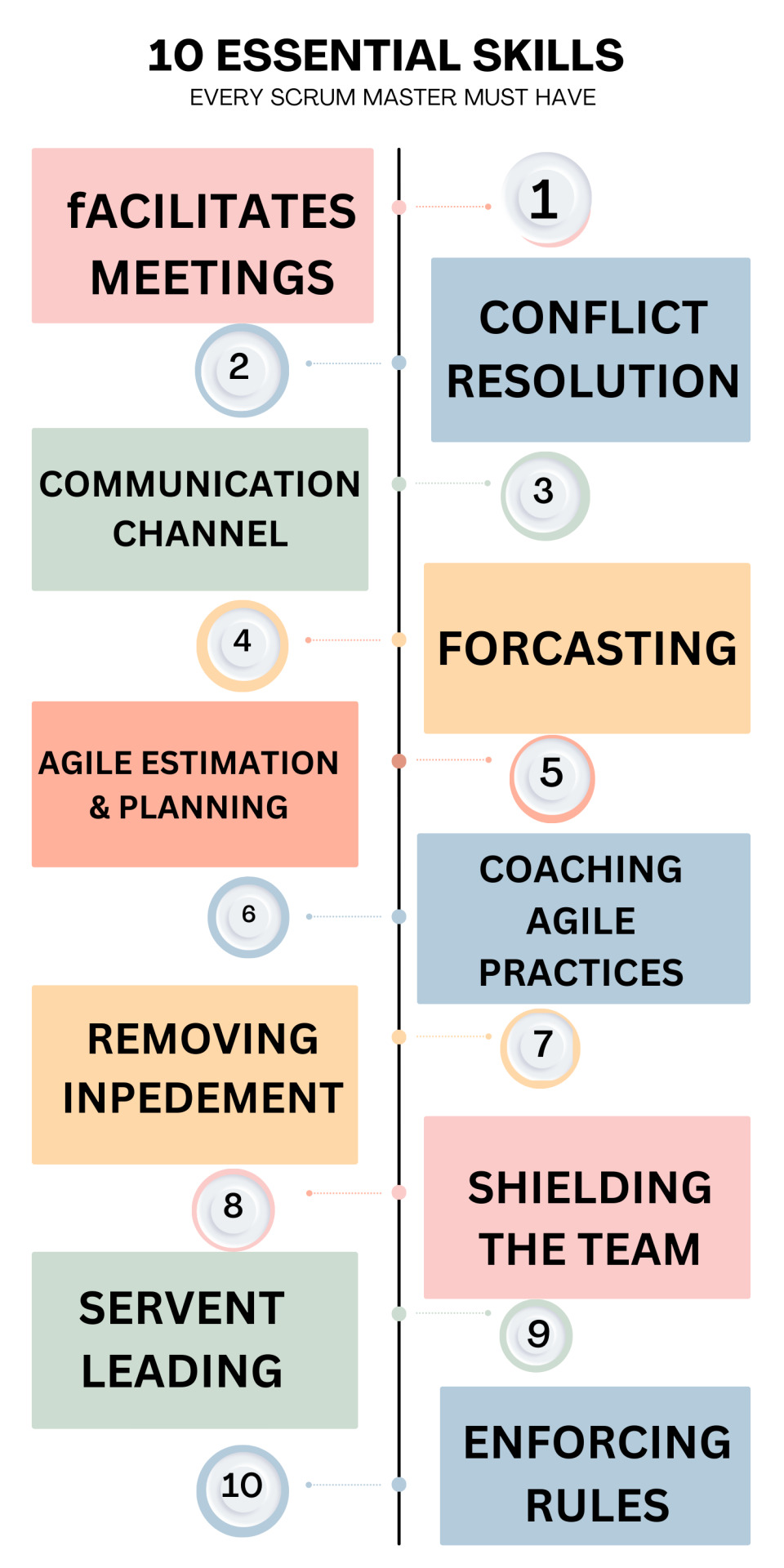
Benefits of CSM Certification:
Improved Project Delivery: CSM-certified professionals are equipped to guide Scrum teams in iteratively and efficiently delivering projects. The emphasis on collaboration and continuous improvement ensures that teams can adapt to changing needs and consistently deliver value.
Effective Team Collaboration: A ScrumMaster's role in promoting collaboration is critical. CSM-certified professionals value open communication, teamwork, and creating an environment in which team members can thrive. This leads to better collaboration and team performance.
Change Adaptability: Scrum, and thus CSM certification, prepares professionals to embrace change. Scrum's iterative nature enables teams to respond to shifting priorities and customer feedback, making them more adaptable in fast-paced project environments.
Stakeholder Satisfaction: CSM-certified professionals contribute to higher stakeholder satisfaction by focusing on customer satisfaction and delivering value in each iteration. This customer-centric approach is consistent with agile project management principles.
Career Advancement: CSM certification is globally recognized and can significantly improve career prospects. Companies value professionals who can effectively lead Scrum teams, and CSM certification validates the skills and knowledge required for this role.
Conclusion:
The Certified ScrumMaster (CSM) certification emerges as a catalyst for effective project management in a world where agility is synonymous with success. Individuals who obtain CSM certification not only validate their understanding of Scrum principles, but also position themselves as leaders capable of guiding teams to collaborative and iterative success. Adopt Scrum principles, obtain your CSM certification, and chart your course to agile project management excellence.
0 notes
Text
How does the mobile application development process work?
The mobile application development process is a critical aspect of business growth in today's tech-driven world. Here's a concise overview:
Conceptualization: It begins with identifying a need or opportunity in the market. As a Business Development Manager, you might start by gathering insights from your client base or market analysis. Your call to action here could be to engage with clients for feedback on potential app features.
Planning: Define the app's objectives, target audience, and platforms (iOS, Android). Set clear goals and KPIs. This is where aligning software with customer needs is vital. Encourage cross-functional team collaboration to shape the project.
Design: Create wireframes and prototypes. The call to action could be involving your team in collaborative innovation to ensure a user-friendly design that resonates with your clients.
Development: Coders bring the design to life. Here, cutting-edge technology plays a crucial role. You might want to stay updated on tech trends to guide your team effectively.
Testing: Rigorous testing ensures quality service. Collaborate with your QA team to maintain transparency in communication about bugs and fixes.
Launch: A strategic sales plan comes into play. Utilize Salesforce to manage leads and clients for the app launch. Engage clients through LinkedIn Sales Navigator.
Marketing: Post-launch, leverage industry analytics for marketing insights. Use data-driven strategies to reach your target audience effectively.
Maintenance: Regular updates and improvements are necessary to stay competitive. Engage your team for continuous improvement.
As you aim to increase sales by 20% this fiscal year, consider how this mobile app can be a growth driver. Explore opportunities in emerging markets and use your industry knowledge to craft personalized strategies. Engage your team and clients for feedback, and ensure your app aligns with your core values of integrity and quality service.
Remember, the mobile app development process is not a one-time effort; it's an ongoing journey. Stay adaptable, and success will follow. For More insights visit-www.distancecoding.agency or Book a meeting-https://calendly.com/distancecoding/30min
0 notes
Text

How to Prevent Cyber Attacks
Discover the top strategies on How to Prevent Cyber Attacks and safeguard your digital assets with expert advice from How to Prevent Cyber Attacks.
Read more: https://agilewaters.com/how-to-prevent-cyber-attacks/
0 notes
Text
Benefits of Agile in Digital Transformation
Faster time to market
Increased adaptability
Improved collaboration
Increased customer focus
Better risk management
Improved efficiency
Collect data and drive insights
#technology#digital transformation#tech#it services#mobile app developers#software development#technology trends#product development service#agile transformation#agile#agileframework
0 notes
Text
SAFe Certification: Your Gateway to Mastering Agile at Scale!
Discover the Power of SAFe® and Why It’s the Buzzword in the IT Training Scene

Hello, Agile enthusiasts! 🚀 Ever stumbled upon the term ‘SAFe®’ and wondered what the hype is all about? Or perhaps you’ve heard whispers in the IT corridors about the SAFe® certification?
Well, you’re in the right place! Today, we’re diving deep into the world of SAFe® and exploring why it’s becoming the go-to certification for IT professionals worldwide. So, grab your explorer’s hat, and let’s embark on this SAFe® adventure!

SAFe® Unveiled:
The Scaled Agile Framework® (SAFe®) is not just another buzzword in the IT realm. It’s a proven, codified, and publicly available framework designed to help enterprises master the art of agility at scale. Born from the real-world experiences of countless professionals, SAFe® is the culmination of best practices, principles, and competencies for achieving business agility.
Why SAFe® is Making Waves:
Enterprise Agility: In today’s fast-paced digital landscape, agility isn’t just a luxury; it’s a necessity. SAFe® empowers organizations to be nimble, adapt to market changes, and deliver value continuously.
Unified Vision: SAFe® fosters alignment, collaboration, and delivery across multiple agile teams. It’s like having a synchronized dance where everyone knows their steps!
Customer-Centricity: At its core, SAFe® is all about delivering value to the customer. It emphasizes short feedback loops, ensuring products and solutions are in tune with customer needs.

The SAFe® Certification Magic:
So, what’s the deal with SAFe® certification? Why are IT professionals flocking to tectrain and other institutes to get certified?
Global Recognition: SAFe® certification isn’t just a feather in your cap; it’s a globally recognized badge of honor. It signals your expertise and commitment to mastering agility at scale.
Career Boost: In the competitive world of IT, differentiation is key. SAFe® certification can be that edge, opening doors to new opportunities and roles.
Continuous Learning: The SAFe® journey doesn’t end with certification. It’s a continuous path of learning, evolving, and growing. And with resources like scaledagile, you’re always in the loop with the latest in the SAFe® world.
Dive Deeper with tectrain:
If your curiosity is piqued and you’re considering the SAFe® certification, tectrain is your perfect partner. With expert trainers, comprehensive courses, and a vibrant community, it’s the ideal launchpad for your SAFe® journey.
youtube
In the grand tapestry of IT certifications, SAFe® stands out as a shining star. It’s not just about scaling Agile; it’s about transforming organizations, driving results, and making a real impact. So, if you’re on the fence about SAFe® certification, take the leap! The Agile world awaits, and with SAFe® in your arsenal, the sky’s the limit! 🌟🚀
P.S. Ready to soar in the SAFe® skies? Dive into tectrain’s SAFe® courses and kickstart your Agile adventure!
1 note
·
View note
Text
An agile project charter is a key document that defines the purpose, vision, scope, and objectives of a project within an agile framework. Unlike traditional project charters, which focus on detailed plans and rigid structures, an agile project charter emphasizes flexibility, collaboration, and iterative development.
It is a guiding document that aligns the team, stakeholders, and sponsors on the project’s direction while allowing for adaptability.
In this blog, we will explore the concept of a project charter in Agile, its components, templates, and best practices for creating one.
#AgileProjectCharter#ProjectCharterAgile#AgileProjectManagement#Scrum#AgileDevelopment#LeanAgile#GanttChart#ChangeManagement#ProductOwner#AgileFramework#ScrumMaster#SoftwareDevelopment#TraceabilityMatrix#AgileTeam#ProjectPlanning
0 notes
Text

Strategic Implementation Frameworks: Essential Components for Effective Execution and Sustainable Growth https://kamyarshah.com/strategic-implementation-frameworks-essential-components-for-effective-execution-and-sustainable-growth/
0 notes
Text
Agile Insights from Vabro
As we continue to navigate the ever-changing landscape of project management, it's essential to understand the nuances of Agile frameworks. At Vabro, we're committed to helping teams unlock their full potential. Our latest research reveals key trends and insights into the adoption and growth of Scrum and Kanban frameworks. Stay ahead of the curve and learn how these methodologies can transform your workflow!
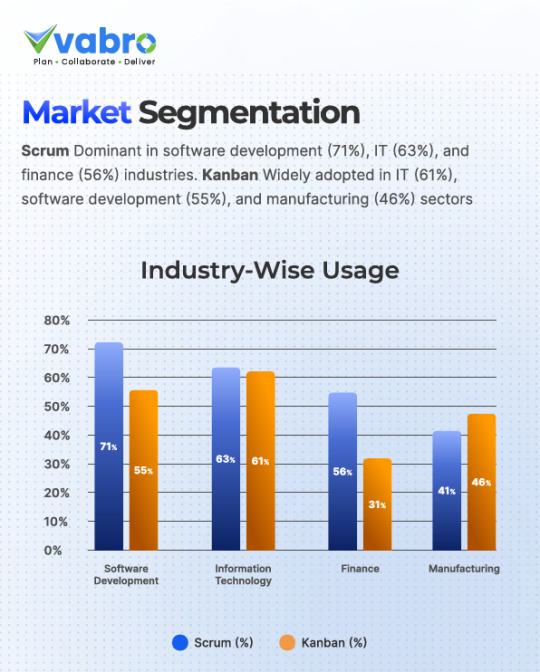
(Source: Grand View Research & Grand View Research)
Market Segmentation:
Scrum: Dominant in software development (71%), IT (63%), and finance (56%) industries
Kanban: Widely adopted in IT (61%), software development (55%), and manufacturing (46%) sectors
Industry-Wide Usage:
Scrum: Preferred by 75% of Fortune 500 companies
Kanban: Adopted by 40% of Fortune 500 companies
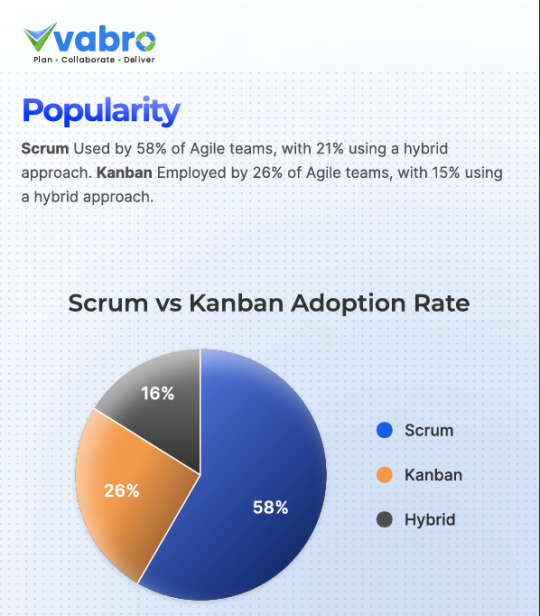
(Source: Grand View Research & Grand View Research)
Popularity:
Scrum: Used by 58% of Agile teams, with 21% using a hybrid approach (Source: VersionOne)
Kanban: Employed by 26% of Agile teams, with 15% using a hybrid approach (Source: VersionOne)

(Source: Grand View Research & Grand View Research)
Growth Prospects:
Scrum: Expected to grow at a CAGR of 12.5% from 2023 to 2030 (Source: MarketsandMarkets)
Kanban: Projected to grow at a CAGR of 10.3% from 2023 to 2030 (Source: Grand View Research)
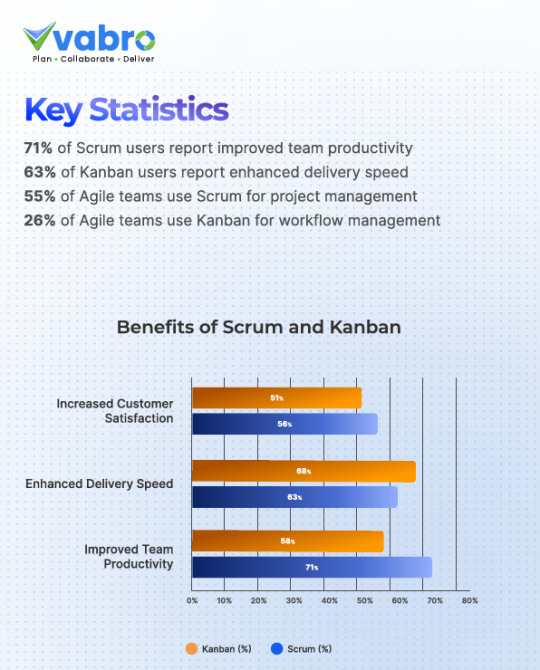
(Source: Grand View Research & Grand View Research)
Key Statistics:
71% of Scrum users report improved team productivity
63% of Kanban users report enhanced delivery speed
55% of Agile teams use Scrum for project management
26% of Agile teams use Kanban for workflow management
Comparison: Scrum and Kanban share similar goals but differ in approach. Scrum excels in:
Prescriptive framework
Iterative development
Role-based responsibilities
Kanban shines in:
Visual workflow management
Continuous delivery
Flexibility and adaptability
Conclusion: Scrum remains the leading Agile framework, dominating the software development and IT industries. Kanban, while less popular, has a strong presence in IT and manufacturing sectors. Both frameworks are expected to grow, with Scrum leading the charge. As the Agile market evolves, understanding the strengths and weaknesses of each framework will be crucial for organizations to make informed decisions and maximize their productivity and efficiency.
Visit www.vabro.com and get started today!
#Vabro#Agile#Scrum#Kanban#ProjectManagement#AgileFrameworks#TeamProductivity#WorkflowManagement#IT#SoftwareDevelopment#Finance#Manufacturing#HybridApproach#MarketTrends#BusinessGrowth#Efficiency#ContinuousDelivery#VisualManagement#AgileInsights
0 notes
Text
Unleashing PRINCE2 Agile Foundation Project Success
First of all,
Maintaining a competitive edge in the ever-changing field of project management necessitates a comprehensive strategy that combines structure and flexibility. Introducing PRINCE2 Agile Foundation, a potent methodology that effectively combines the best aspects of both approaches to promote project success. We'll go over the foundations of PRINCE2 Agile Foundation in this blog post and see how it gives project managers the tools they need to handle the complexity of contemporary projects.
Understanding Agile Foundation PRINCE2:
A mainstay of project management for many years, PRINCE2 (Projects IN Controlled Environments) provides a structured framework that guarantees projects are well-planned, under control, and add value. Agile, on the other side, is praised for its flexibility, teamwork, and change-responsiveness. These two approaches are combined by PRINCE2 Agile Foundation to provide a comprehensive strategy that meets the changing requirements of projects in the modern day.
Important PRINCE2 Agile Foundation Elements:
1. Integration of Agile Concepts:
PRINCE2 Agile Foundation incorporates Agile practices and concepts, enabling iterative development, teamwork, and client input. Projects may adjust to changing requirements and provide added value thanks to this integration.
2. Adapting PRINCE2 Principles:
One of PRINCE2 Agile Foundation's advantages is its capacity to adapt PRINCE2 principles to an Agile setting. Because of this flexibility, project managers can design a tailored strategy that fits the particular requirements of their projects.
3. Cooperation and Communication:
The foundation of PRINCE2 Agile Foundation is effective cooperation and communication. The approach places a strong emphasis on honest and open communication between team members, stakeholders, and clients in order to promote cooperation and trust.
4. Risk Management:
A major focus of the PRINCE2 Agile Foundation is risk management. Agile's iterative structure makes it possible to identify possible hazards early on, giving project managers the opportunity to take proactive measures to address them and prevent obstacles.
5. Scrum and Kanban Practices:
Two well-known Agile frameworks, Scrum and Kanban, are incorporated into the PRINCE2 Agile Foundation. Better project planning, execution, and monitoring are made possible by this integration, which guarantees that projects remain on course and provide results effectively
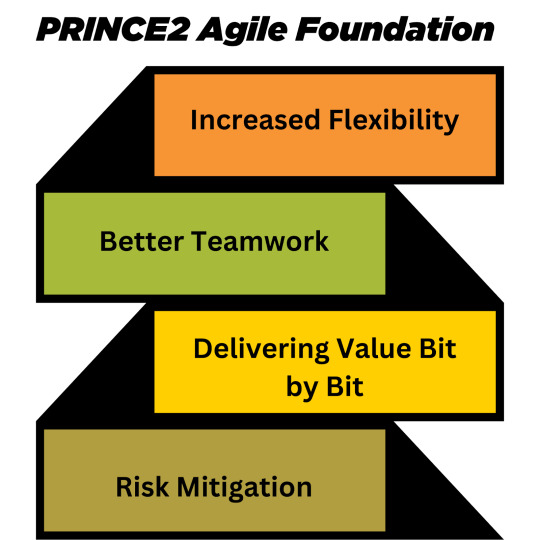
PRINCE2 Agile Foundation Advantages:
1. Increased Flexibility:
The PRINCE2 Agile Foundation's Agile component offers the adaptability required to adapt to shifting project requirements, keeping the project in line with corporate objectives.
2. Better Teamwork:
PRINCE2 Agile Foundation's emphasis on communication and cooperation improves teamwork, which improves decision-making and project outcomes.
3. Delivering Value Bit by Bit:
Agile's iterative structure makes it possible to deliver project features bit by bit, guaranteeing that stakeholders get value at every turn and may offer input for ongoing development.
4.Risk Mitigation:
By identifying and addressing any problems early in the project lifecycle, the integrated risk management techniques in PRINCE2 Agile Foundation lessen the chance of project delays or failures.
In summary:
PRINCE2 Agile Foundation is evidence of how project management techniques have advanced. Through the integration of Agile methodology with the structure of PRINCE2, this approach gives project managers a flexible toolkit to effectively manage the intricacies of contemporary projects. The PRINCE2 Agile Foundation shows itself to be a useful tool for promoting project success as businesses look for more effective and efficient ways to manage their projects.
0 notes
Text

Join #Visualpath#scrummaster Online Training, providing hands-on experience through real-time projects. Learn from certified trainers with over a decade of industry and develop practical skills to excel in #scrummastercourse. Our comprehensive training is available worldwide, including in Hyderabad, the USA, UK, Canada, Dubai, Australia, and more. Gain in-depth knowledge and industry-recognized certification to advance your career. Enroll in our and stay ahead in the IT industry. Book a free demo today Call: +91-7032290546
Whatsapp: https://wa.me/c/917032290546
Visit our Blog: https://visualpathblogs.com/
Visit: https://www.visualpath.in/online-scrum-master-course.html
#scrummaster#agilecoaching#scrum#agile#AgileMindset#scrumleadership#scrumteam#agiletransformation#ScrumCommunity#scrummastercertification#scrublife#agileframework#ScrumGuide#ScrumAlliance#agilescrum#agileleadership#agilemindsetshift#scrumlifecycle#AgileInnovation#AgileMindset
#Scrum Master Course#Scrum Master Training#Scrum Master Course in Hyderabad#Scrum Master Training in Hyderabad#Scrum Master Online Training#Scrum Master Certification Online#Scrum Master Classes#Scrum Master Course in Bangalore
0 notes